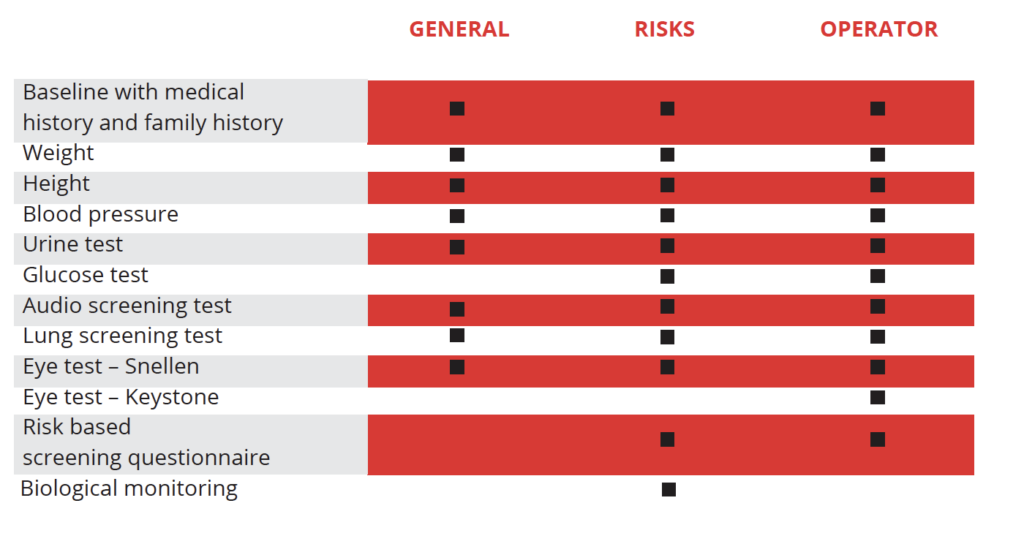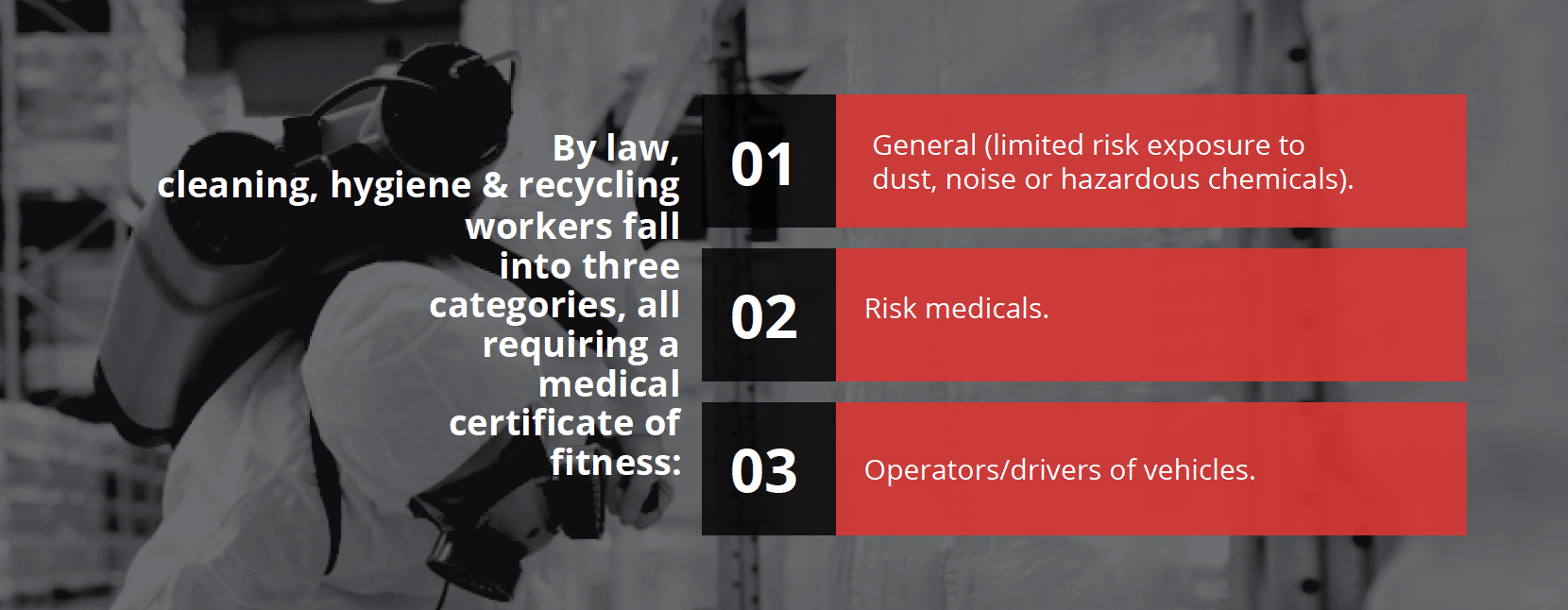Cleaning, Hygiene & Recycling profile
Workers in the cleaning, hygiene and recycling services sectors are exposed to a wide variety of health risks depending both on the tasks they perform and the premises where they work. They face chemical, biological and physical hazards, which could lead to occupational accidents and disease.
Cleaning and hygiene services, as well as waste management, place workers at a higher than average risk of exposure to occupational health hazards. Workplace safety is of paramount importance and should be accompanied by regular occupational health medicals.
- Irritation of the eyes and mucus membranes
- Skin dermatitis
- Respiratory disorders such as asthma
- Different types of cancers
In addition, cleaning staff are exposed to bio-logical hazards such as bacteria, viruses and moulds, which they could inhale, absorb though the skin or even ingest accidentally. Exposure to blood-borne pathogens are common for cleaners in the healthcare sector and puts them at risk of contracting, for example, hepatitis viruses. Those who clean public places can come into contact with animals such as birds and rodents and their excrement, which carries additional health risks.
Cleaning can also be physically demanding work and often necessitates working with awkward equipment in confined spaces that require odd postures such as bending over or backwards. This can be strenuous for workers’ bodies and lead to musculoskeletal disorders.
Physical strain can also be caused by the use of vibrating equipment and the presence of noise, whereas heat stress could occur if they work in hot or humid environments.
Workers in the recycling and waste mangement and the protective equipment the employee sector, especially sorters, are exposed to a great variety of health hazards too. These range from used hypodermic needles and diapers to the mercury and lead in thermometers, batteries and fluorescent lights.
Dust and airborne contaminants are common at waste and recycling facilities. They may contain micro-particles of plastics or glass, as well as toxic substances such as asbestos or silica. All of these are known respiratory irritants.
The following chart shows the test are done for each category:

Training
Services
Well-trained employees are safe employees
Your construction site is only as safe as the employees working for you – and often they are working alone, without your oversight. They need to know what to do when an unexpected event occurs in order to manage the most rapid response possible and minimise risk exposure, injuries and even deaths.
We can help you with your safety training programme either on-site or at our head office in Midrand, where we have classrooms as well as scaffolding to train employees working on heights. This division aims to take the burden of compliance with the Occupational Health and Safety Act away from you so that you can focus on your core functions.
Our training is certified by the Health & Welfare Seta and the Construction Seta. We specialise in:
- Working on heights Scaffold erecting and inspection
- First aid level 1
- Health and safety representative
- Hazard identification and risk assessment
- Basic fire-fighting
Safety Files
We will open and manage your contractor health and safety files for you, ensuring all documentation required in terms of the Occupational Health and Safety Act as well as the Construction Regulations are properly kept and maintained.
Risk Assessments
We will conduct a complete audit to assess your compliance with all aspects of the Occupational Health and Safety Act. This includes a general facility safety inspection of aspects such as storage, lighting, air handling, sanitation, hazardous products, emergency equipment, and so forth. We also develop safety plans as well as fall protection plans. In addition, we offer contractor management to ensure that contractors working on your premises are in compliance with the Occupational Health and Safety Act. This ensures that their activities do not place you at risk of non-compliance.
Incident Investigation
We can investigate all incidents in the workplace and help you to develop and implement action plans to prevent them happening again.

